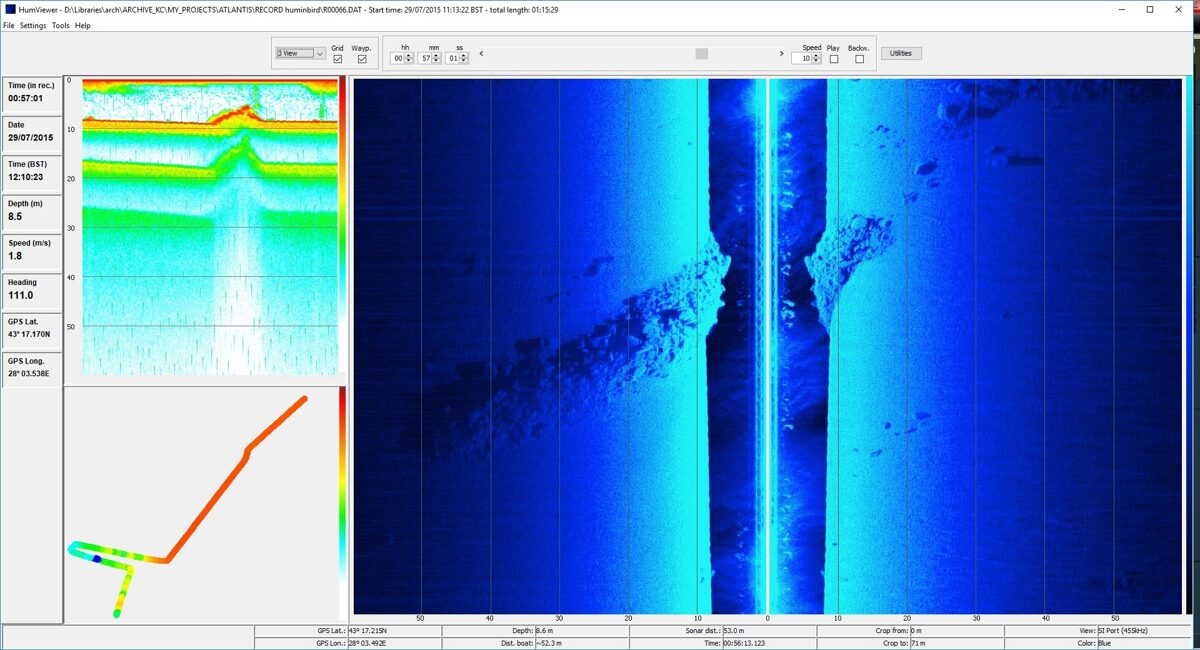SIDE SCAN IMAGING

Side-scan sonar (also sometimes called side scan sonar, sidescan sonar, side imaging sonar, side-imaging sonar and bottom classification sonar) is a category of sonar system that is used to efficiently create an image of large areas of the sea floor.
The earliest side-scan sonars used a single conical-beam transducer. Next, units were made with two transducers to cover both sides. The transducers were either contained in one hull-mounted package or with two packages on either side of the vessel. Next the transducers evolved to fan-shaped beams to produce a better “sonogram” or sonar image. In order to get closer to the bottom in deep water the side-scan transducers were placed in a “tow fish” and pulled by a tow cable.
Up until the mid-1980s, commercial side scan images were produced on paper records. The early paper records were produced with a sweeping plotter that burned the image into a scrolling paper record. Later plotters allowed for the simultaneous plotting of position and ship motion information onto the paper record. In the late 1980s, commercial systems using the newer, cheaper computer systems developed digital scan-converters that could mimic more cheaply the analog scan converters used by the military systems to produce TV and computer displayed images of the scan, and store them on video tape. Currently data is stored on computer hard drives or solid-state media.
